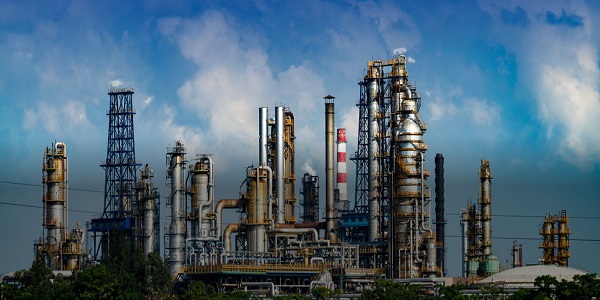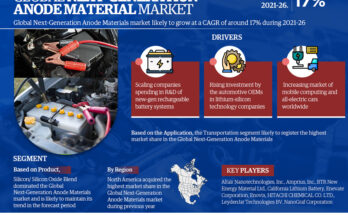Global Petrochemicals Market has reached USD556.25 billion by 2023 and is anticipated to project robust growth in the forecast period with a CAGR of 4.86% through 2029. The increasing demand for the product can be attributed to a substantial rise in the demand for downstream products from various end-use industries such as construction, pharmaceuticals, and automotive. This surge in demand is a major factor driving the growth of the industry. Petrochemicals, being a vital component for many industrial processes, form the backbone of an industrial economy.
Petrochemicals play a crucial role in the manufacturing of various products such as tires, industrial oil, detergents, plastics, and more. In fact, basic plastics derived from petrochemicals act as fundamental building blocks in the production of consumer goods. This highlights the significant impact and widespread application of petrochemical derivatives across industries.
To ensure a stable and seasonal supply of petrochemical derivatives, end-use industries closely monitor and evaluate the quality of products supplied. They establish procurement agreements with suppliers to purchase these derivatives in bulk, thereby leveraging their bargaining power in the market. The presence of a growing number of product suppliers has also contributed to the high bargaining power of buyers.
However, the industry is highly influenced by the prices of crude oil, which serves as a basic raw material for the manufacturing of petrochemicals. The volatility in crude oil prices and supply directly affects the production cost of petrochemicals, making their production process relatively expensive.
Download FREE Sample Report @ https://www.techsciresearch.com/sample-report.aspx?cid=21078
Looking ahead, the market growth of petrochemicals may face challenges due to factors such as the growing consumer inclination towards environment-friendly products in developed and developing regions. Additionally, the volatile prices of raw materials used in petrochemical production are likely to impact the market in the coming years.
Key Market Drivers-Petrochemicals Market
- Growing Demand for Petrochemicals in the Automotive Industry
Petrochemicals are chemical products derived from petroleum and other hydrocarbons like natural gas. They undergo various refining processes to obtain different compounds that are used in a wide array of applications in the automotive industry. These versatile substances play a crucial role in manufacturing synthetic materials, rubber tires, plastics, solvents, lubricants, and fuels.
In the realm of automotive manufacturing, petrochemicals have emerged as integral components in producing lightweight, durable, and high-performance automotive parts. Take plastics, for example, which are extensively used in vehicle interiors, exteriors, and under-the-hood components. These plastics, derived from petrochemicals, not only contribute to weight reduction but also enhance fuel efficiency. Additionally, synthetic rubber, another significant product of petrochemicals, plays a crucial role in manufacturing tires that offer superior performance and longevity on the road.
The demand for petrochemicals in the automotive industry has been steadily increasing, driven by several factors. Firstly, the continuous rise in global vehicle production to meet the growing consumer demand necessitates an increased supply of petrochemical products. Secondly, the automotive industry’s ongoing pursuit of vehicle lightweighting to enhance fuel efficiency and reduce greenhouse gas emissions has led to a surge in the utilization of petrochemical-derived plastics and composites.
Furthermore, the shift towards electric vehicles (EVs) has also had a positive impact on the petrochemicals market. EVs require a higher proportion of plastic components compared to conventional cars due to their battery systems and lighter overall weight requirements. As a result, the demand for petrochemical products used in the manufacturing of these components has witnessed a significant upswing.
In conclusion, petrochemicals have become indispensable in the automotive industry due to their diverse applications and contributions to lightweighting, fuel efficiency, and overall performance. The industry’s growth, coupled with the increasing demand for sustainable and innovative automotive solutions, further emphasizes the vital role that petrochemicals play in shaping the future of automotive technology.
- Growing Demand for Petrochemicals in the Agriculture Industry
Petrochemicals are chemical products derived from petroleum and other hydrocarbons, such as natural gas. In the agriculture sector, they play a crucial and multifaceted role in improving crop yields and overall farm productivity. Their key applications include the production of fertilizers, pesticides, herbicides, and agricultural plastics, which contribute to various aspects of modern farming practices.
Fertilizers produced from petrochemicals, such as nitrogenous and phosphate fertilizers, are essential for promoting plant growth and enhancing soil fertility. By providing essential nutrients to plants, these fertilizers ensure optimal growth and help replenish nutrient-depleted soils, resulting in healthier and more abundant harvests.
Petrochemical-based pesticides and herbicides are integral to protecting crops from pests and weeds. By effectively combating harmful insects, diseases, and unwanted vegetation, these products safeguard the health and well-being of crops, leading to higher quality yields.
Agricultural plastics, another valuable product of petrochemicals, find extensive use in various farming practices. They are employed in the creation of greenhouse covers, mulch films, and irrigation systems, which contribute to improved crop quality, increased agricultural productivity, and efficient water usage. These plastics help create controlled farming environments, shielding crops from adverse weather conditions, optimizing temperature and humidity, and promoting optimal growth conditions.
The demand for petrochemicals in the agriculture industry has been steadily growing, driven by several factors. Firstly, the continuous growth of the global population has led to increased food demand, necessitating more efficient and productive farming practices. Petrochemical products enable farmers to optimize their operations and achieve higher yields to meet these growing food requirements.
Secondly, climate change and its impact on crop yields have prompted farmers to embrace advanced farming techniques that often rely on the use of petrochemicals. Agricultural plastics, for instance, are increasingly employed to create controlled environments that can withstand extreme weather conditions, safeguarding crops and ensuring their optimal growth.
Lastly, there is a growing awareness about sustainable farming practices, leading to the development and use of more efficient and environmentally friendly petrochemical products. This includes the development of bio-based alternatives derived from renewable resources, as well as innovations in recycling and waste management within the petrochemical sector.
In summary, petrochemicals play a vital role in modern agriculture, facilitating efficient and sustainable farming practices. From fertilizers and pesticides to agricultural plastics, these products contribute to higher crop yields, increased productivity, and improved farm efficiency, ultimately supporting global food security efforts.
Key Players-Petrochemicals Market
- BASF SE
- BP Plc.
- DuPont de Nemours, Inc.
- Total S.A.
- Exxon Mobil Corp.
- China Petroleum & Chemical Corporation
- Saudi Arabian Oil Co.
- Sumitomo Chemical Co., Ltd.
- The Dow Chemical Company
- Chevron Phillips Chemical Company
Download FREE Sample Report @ https://www.techsciresearch.com/sample-report.aspx?cid=21078
Key Market Challenges-Petrochemicals Market
- Volatility in Price of Raw Materials
Petrochemicals are primarily derived from crude oil and natural gas, which serve as the key raw materials. These hydrocarbons undergo a series of complex chemical processes to yield a vast array of products, encompassing plastics, fertilizers, detergents, resins, and more.
The cost of these raw materials constitutes a significant portion of the overall production expenditure within the petrochemical industry. Consequently, any fluctuation in their prices directly impacts the cost of production, overall profitability, and ultimately even the pricing strategies adopted for petrochemical products.
You may also read:
Basic Chemicals Market [2029]: A Deep Dive into the Latest Market Trends, Market Segmentation
Ceramic Coatings Market – Future, Scope, Trends [Latest]
Solvent Based Plastic Recycling Market [2028] – Report & Market Share
India Ethanol Market | [2029] Exploring Growth, Potential, and Future, Trends
Table of Content-Petrochemicals Market
- Product Overview
1.1. Market Definition
1.2. Scope of the Market
1.2.1. Markets Covered
1.2.2. Years Considered for Study
1.2.3. Key Market Segmentations
- Research Methodology
2.1. Objective of the Study
2.2. Baseline Methodology
2.3. Key Industry Partners
2.4. Major Association and Secondary Applications
2.5. Forecasting Methodology
2.6. Data Triangulation & Validation
2.7. Assumptions and Limitations
- Executive Summary
3.1. Overview of the Market
3.2. Overview of Key Market Segmentations
3.3. Overview of Key Market Players
3.4. Overview of Key Regions/Countries
3.5. Overview of Market Drivers, Challenges, Trends
- Impact of COVID-19 on Global Petrochemicals Market
- Global Petrochemicals Market Outlook
5.1. Market Size & Forecast
5.1.1. By Value
5.2. Market Share & Forecast
5.2.1. By Product (Ethylene, Propylene, Butadiene, Benzene, Xylene, Toluene, Methanol)
5.2.2. By Application (Aerospace, Agriculture, Automotive, Building & Construction, Consumer & Industrial Goods, and Others)
5.2.3. By Region
5.2.4. By Company (2023)
5.3. Market Map
- Asia Pacific Petrochemicals Market Outlook
6.1. Market Size & Forecast
6.1.1. By Value
6.2. Market Share & Forecast
6.2.1. By Product
6.2.2. By Application
6.2.3. By Country
6.3. Asia Pacific: Country Analysis
6.3.1. China Petrochemicals Market Outlook
6.3.1.1. Market Size & Forecast
6.3.1.1.1. By Value
6.3.1.2. Market Share & Forecast
6.3.1.2.1. By Product
6.3.1.2.2. By Application
6.3.2. India Petrochemicals Market Outlook
6.3.2.1. Market Size & Forecast
6.3.2.1.1. By Value
6.3.2.2. Market Share & Forecast
6.3.2.2.1. By Product
6.3.2.2.2. By Application
6.3.3. Australia Petrochemicals Market Outlook
6.3.3.1. Market Size & Forecast
6.3.3.1.1. By Value
6.3.3.2. Market Share & Forecast
6.3.3.2.1. By Product
6.3.3.2.2. By Application
6.3.4. Japan Petrochemicals Market Outlook
6.3.4.1. Market Size & Forecast
6.3.4.1.1. By Value
6.3.4.2. Market Share & Forecast
6.3.4.2.1. By Product
6.3.4.2.2. By Application
6.3.5. South Korea Petrochemicals Market Outlook
6.3.5.1. Market Size & Forecast
6.3.5.1.1. By Value
6.3.5.2. Market Share & Forecast
6.3.5.2.1. By Product
6.3.5.2.2. By Application



